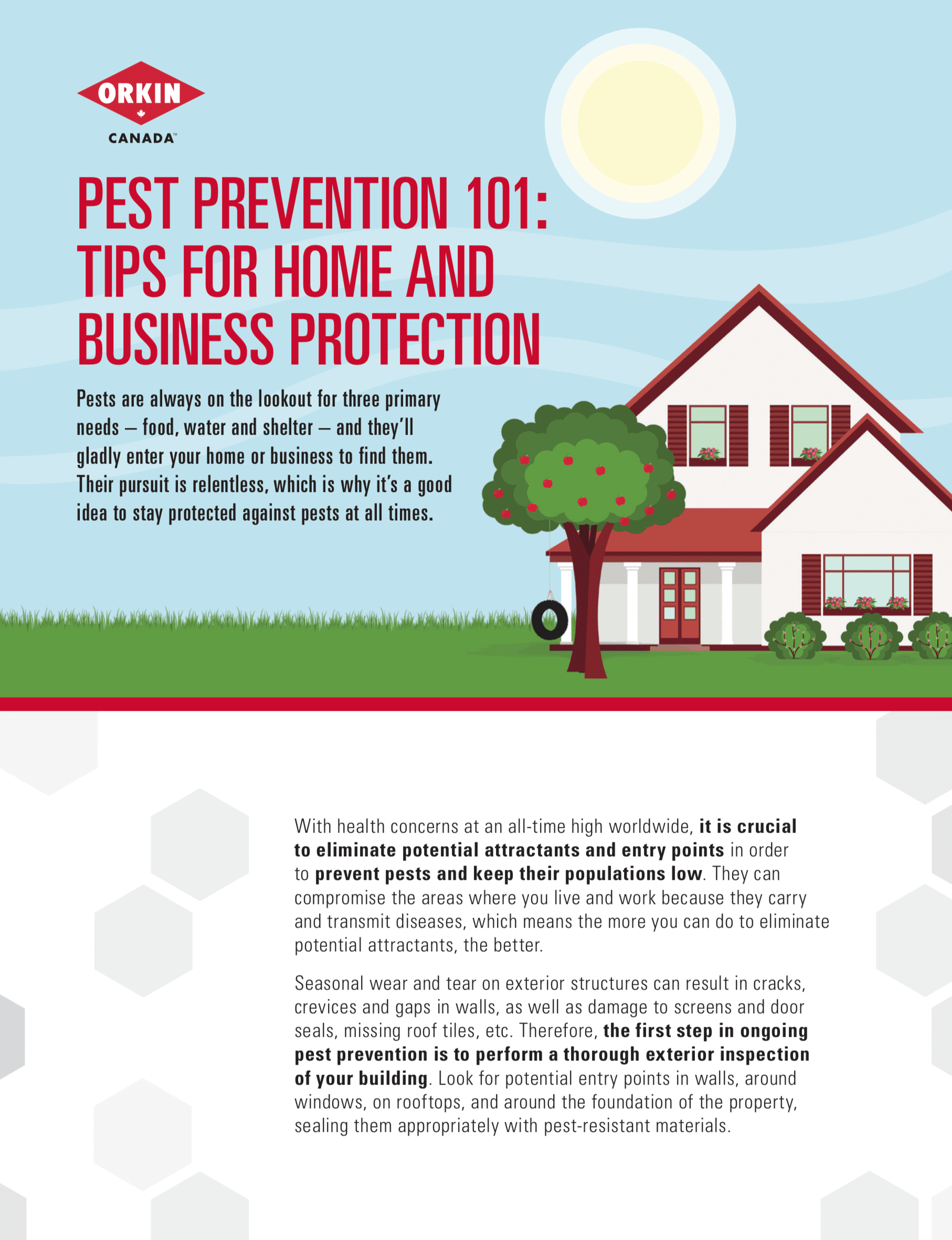Pests are always on the lookout for three primary needs – food, water and shelter – and they’ll gladly enter your home or business to find them. Their pursuit is relentless, which is why it’s a good idea to stay protected against pests at all times. With health concerns at an all-time high worldwide, it is crucial to eliminate potential attractants and entry points in order to prevent pests and keep their populations low. They can compromise the areas where you live and work because they carry and transmit diseases, which means the more you can do to eliminate potential attractants, the better.
Seasonal wear and tear on exterior structures can result in cracks, crevices and gaps in walls, as well as damage to screens and door seals, missing roof tiles, etc. Therefore, the first step in ongoing pest prevention is to perform a thorough exterior inspection of your building. Look for potential entry points in walls, around windows, on rooftops, and around the foundation of the property, sealing them appropriately with pest-resistant materials.
Here are a few more detailed tips to keep these unwanted invaders from moving in and taking over your space:
Indoors
- Repair or replace any windows that have damaged screens, stripping or sealant.
- Close gaps under doors – especially garage doors – resulting from worn- out sealants or mechanical damage.
- Replace missing vent caps or damaged screens.
- Clean window sills to remove fungal growth and other organic build-ups.
- Remove clutter and debris from the bases of walls/foundation.
- Examine doors for any cracks or gaps, and do not leave doors open.
- Vacuum, sweep and clean floors, including baseboards and corners.
- Ensure garbage and recycling bins are lined and have tightly-fitted lids. If possible, do not place them next to entrance doors or below windows outdoors.
Outdoors
- As trees and shrubs grow, trim back branches or loose vegetation so nothing is touching your home or building.
- Be cautious when planting anything that produces nuts, fruits, seeds or strong scents, as these can attract pests.
- Clean out gutters and dispose of any debris.
- Check for fallen tree branches and other vegetation debris that can provide harbourage for pests
Need a quick reference guide for all of this? You can also download our expert tip sheet here.
You may also like
Canada's Top 25 Bed Bug Cities Of 2023
Bed bugs are extremely efficient hitch hikers. They can move easily across a room and climb onto luggage or anything left on a bed in just one night. Learn which cities have made Canada’s top 25 bed buggiest cities.
British Columbia's Top 20 'Rattiest' Cities 2023
As winter approaches, pest control leader Orkin Canada reminds homeowners and business owners to take precautions to help keep rodents out. Cities are ranked by the number of rodent (rat & mice) treatments the company performed from August 1, 2021 through July 31, 2022.
Ontario's Top 25 "Rattiest" Cities 2023
Pest control leader Orkin Canada reminds home owners and business owners to take precautions to help keep rodents out. Cities are ranked by the number of rodent (rat & mice) treatments the company performed from August 1, 2022 through July 31, 2023. This ranking includes both residential and commercial treatments.
Eastern Canada's Top 15 'Rattiest' Cities 2023
As winter approaches, pest control leader Orkin Canada reminds homeowners and business owners to take precautions to help keep rodents out. Cities are ranked by the number of rodent (rat & mice) treatments the company performed from August 1, 2021 through July 31, 2022.
Remove pests from your home, and stop them from coming back
We work hard to listen, understand and assess your unique situation. Request a free, no-obligation estimate today for a customized pest program that fits your needs.
Request a Free Home EstimateRequest a Free Business Consultation


